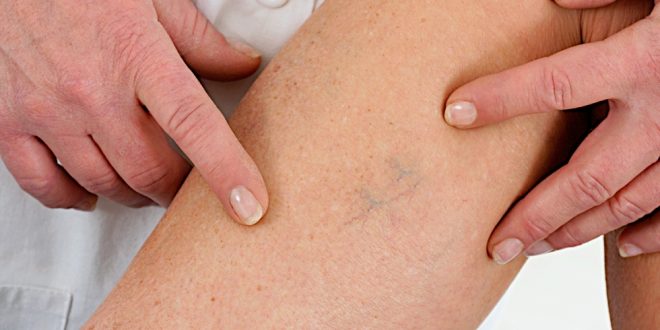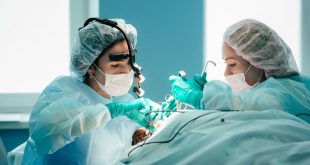Spider vein is a term used in describing the series of veins often radiated out from an area, which is shaped like a spider. These spider veins can develop on any part of the body, including the face, but commonly appears on ankles, calves or thighs.
Spider veins occur due to abnormal blood flow and deteriorating of the blood vessel walls on the affected veins. Various factors contribute to the development of spider veins, including weight gain, standing for long hours and other activities that put pressure on the vein.
Although majority of people with spider veins choose to remove it due to unsightliness, it can also be removed to alleviate restless legs, burning, aching, cramps and other conditions associated with spider veins.
The most common technique used in treating spider veins is sclerotherapy. Sclerotherapy, which has been used since 1930s, is a procedure used in treating varicose veins by injecting a solution directly into the affected vein. When the solution, usually sodium chloride, irritates the vessel lining, it swells and sticks together, making the blood to clot. Eventually, the vessel becomes scar tissues and disappears.
In some patients, laser spider vein treatments are used. It can be performed alone or in conjunction with sclerotherapy.
Also Known As: Sclerotherapy, Laser Spider Vein Treatments
Benefits of Spider veins treatments
Sclerotherapy and laser vein treatments can remove all the side effects of spider veins such as burning, aching, cramps and restless legs.
Sclerotherapy will benefit both men and women, of all ages, with varicose and spider veins on any part of the body.
Laser spider vein treatments benefit people by removing unwanted spider veins without damaging its surrounding tissues. The entire procedure takes a few minutes, without anesthesia.
The Spider Vein Treatments
Sclerotherapy uses 23% sodium chloride mixed with heparin and a local anesthetic called lidocaine. Using a very fine needle, the solution is injected directly into the blood vessels. The number of spider veins treated in one session depends on the size or location of veins and overall medical condition.
Laser vein treatment is performed by cleansing and removing oils on the area to be treated. Brief emissions of laser light will then be used in removing superficial blood vessels, using controlled levels of intense penetration. As the laser works through the vessels, zapping sounds and smoke may occur. The treated area will then be covered with antibiotic ointment to prevent infection.
Recovery After Spider Vein Treatment Procedures
Immediately after the spider vein treatment, a patient can drive himself or herself home. The patient can resume to daily activities. In fact, doctors encourage the patients to walk. The patients are required to wear a support wrap to compress the treated area.
After the spider vein treatment, whether performed using sclerotherapy or laser, patients should avoid aspirin, ibuprofen and anti-inflammatory medications for two days. Instead, you may use Tylenol to counter discomfort.
Patients should refrain from taking hot baths, sauna, hot compress or any kind of heat two days after the spider vein treatments. Direct sunlight, tanning beds, swimming, jogging, aerobics and other strenuous activities should be resumed at least ten days after the treatment.
When a patient used Sclerotherapy, he or she may experience temporary cramping or itching at the treated area. When this happens, the area should remain dry for a few days.
Laser spider vein treatment may cause the area to swell or become red. However, the color will fade within several days. TO reduce the swelling, cold compress, frozen aloe vera gels or ice packs are recommended.
However, the duration of each patient’s recovery depends largely on one’s capacity to heal.
The Results
In general, spider veins respond positively to treatment within three to six weeks, while larger spider veins can disappear in three to four months.
Once the veins respond to either Sclerotherapy or laser treatment, it will not reappear. However, new veins may appear again over time.
Surgical facility And Cost
Since Sclerotherapy and laser spider vein treatment does not require anesthesia, these procedures are usually performed in a doctor’s office or any outpatient facility.
The costs of Sclerotherapy and laser treatment are determined by several factors – area to be treated, number of injections per area and the time needed to complete the procedure.
The average cost for Sclerotherapy may range from $200 to $600 for each leg. However, the costs of laser treatments for spider veins are pricier – with an average cost of $2,500 excluding related expenses.
Side Effects, Risks, Complications and Contradictions
Sclerotherapy may give out side effects such as redness, lumpiness, brown spots or lines and bruising at the treated area. Serious side effects, which are rare, include inflammation, formation of ulcers, red streaking, sudden swelling of leg and allergic reactions to the solution used in Sclerotherapy.
Laser treatments may cause temporary or permanent skin lightnening, hyperpigmentation and burns.
 Lesbian, Gay, Bisexual, Transgender & Intersex News Lesbian News, Gay News, Bisexual News, Transgender News, Intersex News, LGBTI News
Lesbian, Gay, Bisexual, Transgender & Intersex News Lesbian News, Gay News, Bisexual News, Transgender News, Intersex News, LGBTI News




